Paul Delvaux (1897-1994)
Get a Delvaux Certificate of Authenticity for your painting (COA) for your Delvaux drawing.
For all your Delvaux artworks you need a Certificate of Authenticity (COA) in order to sell, to insure or to donate for a tax deduction.
Getting a Delvaux Certificate of Authenticity (COA) is easy. Just send us photos and dimensions and tell us what you know about the origin or history of your Delvaux painting or drawing.
If you want to sell your Delvaux painting or drawing use our selling services. We offer Delvaux selling help, selling advice, private treaty sales and full brokerage.
We have been authenticating Delvaux and issuing certificates of authenticity since 2002. We are recognized Delvaux experts and Delvaux certified appraisers. We issue COAs and appraisals for all Delvaux artworks.
Our Delvaux paintings and drawings authentications are accepted and respected worldwide.
Each COA is backed by in-depth research and analysis authentication reports.
The Delvaux certificates of authenticity we issue are based on solid, reliable and fully referenced art investigations, authentication research, analytical work and forensic studies.
We are available to examine your Delvaux painting or drawing anywhere in the world.
You will generally receive your certificates of authenticity and authentication report within two weeks. Some complicated cases with difficult to research Delvaux paintings or drawings take longer.
Our clients include Delvaux collectors, investors, tax authorities, insurance adjusters, appraisers, valuers, auctioneers, Federal agencies and many law firms.
We perform Paul Delvaux art authentication. appraisal, certificates of authenticity (COA), analysis, research, scientific tests, full art authentications. We will help you sell your Paul Delvaux or we will sell it for you.
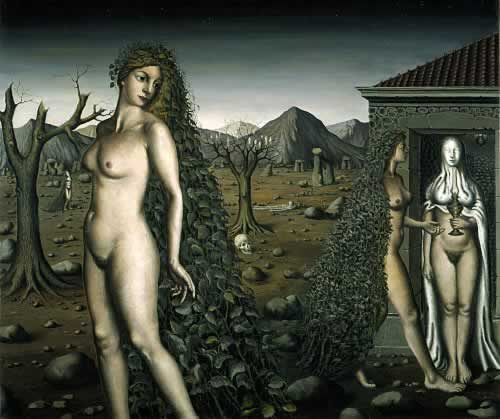
Paul Delvaux was a Belgian painter, famous for his surrealist paintings with female nudes. Delvaux was born in Antheit in the Belgian province of Lige, the son of a lawyer. The young Delvaux took music lessons, studied Greek and Latin, and absorbed the fiction of Jules Verne and the poetry of Homer. All of his work was to be influenced by these readings, starting with his earliest drawings showing mythological scenes. He studied at the Brussels Académie royale des Beaux-arts, albeit in the architecture department owing to his parents’ disapproval of his ambition to be a painter. Nevertheless, he pursued his goal, attending painting classes taught by Constant Montald and Jean Deville. The painters Frans Courtens and Alfred Bastien also encouraged Delvaux, whose works from this period were primarily naturalistic landscapes. He completed some 80 paintings between 1920 and 1925, which was the year of his first solo exhibition.

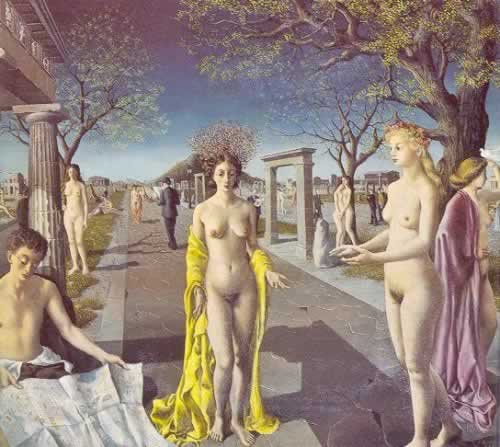
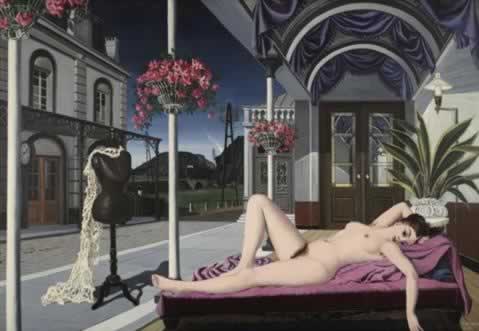
Delvaux’s paintings of the late 1920s and early 1930s, which feature nudes in landscapes, are strongly influenced by such Flemish Expressionists as Constant Permeke and Gustave De Smet. A change of style around 1933 reflects the influence of the metaphysical art of Giorgio de Chirico, which he had first encountered in 1926 or 1927. In the early 1930s Delvaux found further inspiration in visits to the Brussels Fair, where the Spitzner Museum, a museum of medical curiosities, maintained a booth in which skeletons and a mechanical Venus figure were displayed in a window with red velvet curtains. This spectacle captivated Delvaux, supplying him with motifs that would appear throughout his subsequent work. In the mid-1930s he also began to adopt some of the motifs of his fellow Belgian Rene Magritte, as well as that painter’s deadpan style in rendering the most unexpected juxtapositions of otherwise ordinary objects.
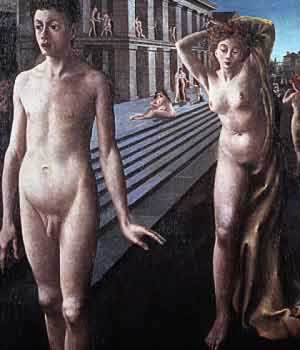
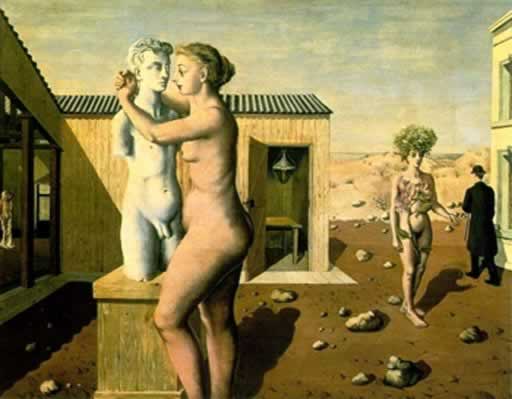
Delvaux acknowledged his influences, saying of de Chirico, “with him I realized what was possible, the climate that had to be developed, the climate of silent streets with shadows of people who can’t be seen, I’ve never asked myself if it’s surrealist or not.” Although Delvaux associated for a period with the Belgian surrealist group, he did not consider himself “a Surrealist in the scholastic sense of the word.” As Marc Rombaut has written of the artist: “Delvaux … always maintained an intimate and privileged relationship to his childhood, which is the underlying motivation for his work and always manages to surface there. This ‘childhood,’ existing within him, led him to the poetic dimension in art.”
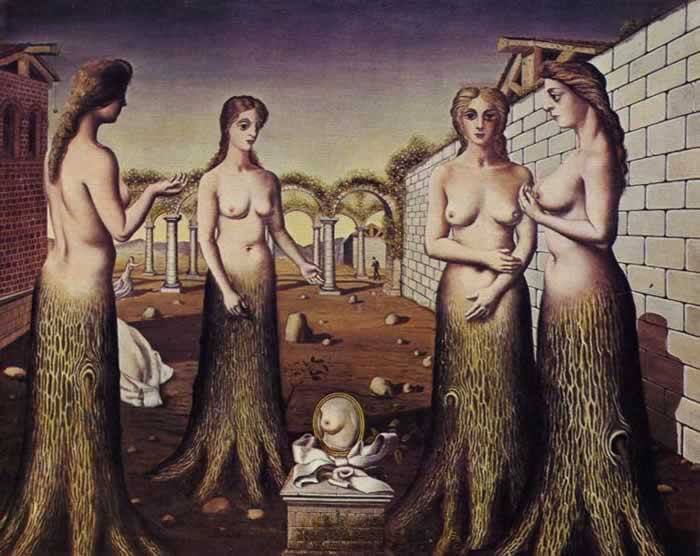
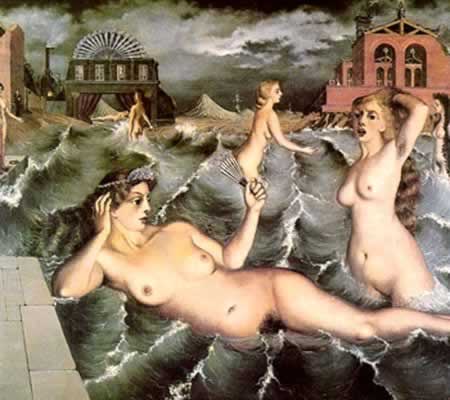
The paintings Delvaux became famous for usually feature numbers of nude women who stare as if hypnotized, gesturing mysteriously, sometimes reclining incongruously in a train station or wandering through classical buildings. Sometimes they are accompanied by skeletons, men in bowler hats, or puzzled scientists drawn from the stories of Jules Verne. Delvaux would repeat variations on these themes for the rest of his long life, although some departures can be noted. Among them are his paintings of 1945-47, rendered in a flattened style with distorted and forced perspective effects, and the series of crucifixions and deposition scenes enacted by skeletons, painted in the 1950s.
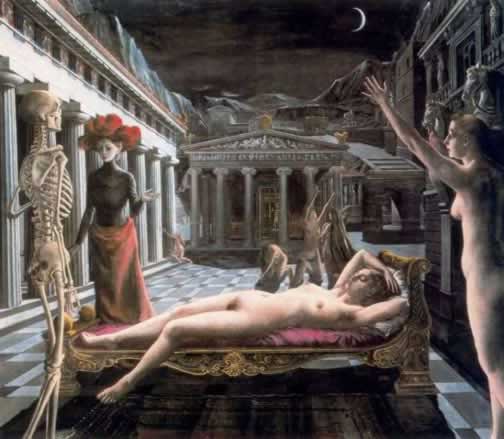
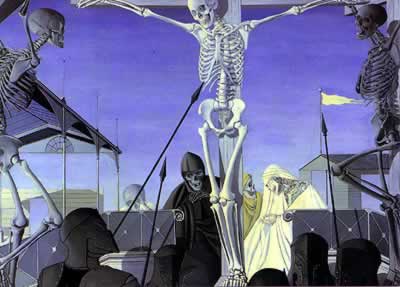
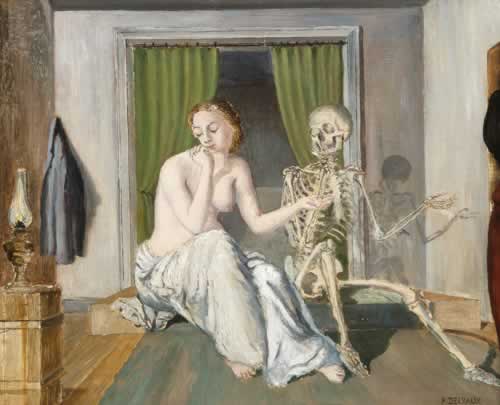
In the late 1950s he produced a number of night scenes in which trains are observed by a little girl seen from behind. These compositions contain nothing overtly surrealistic, yet the clarity of moonlit detail is hallucinatory in effect. Trains had always been a subject of special interest to Delvaux, who never forgot the wonder he felt as a small child at the sight of the first electric trams in Brussels.
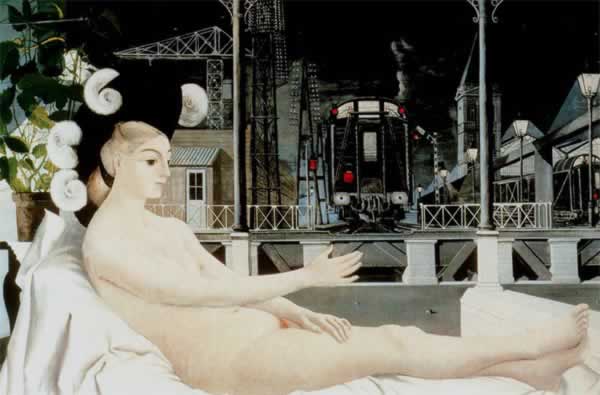
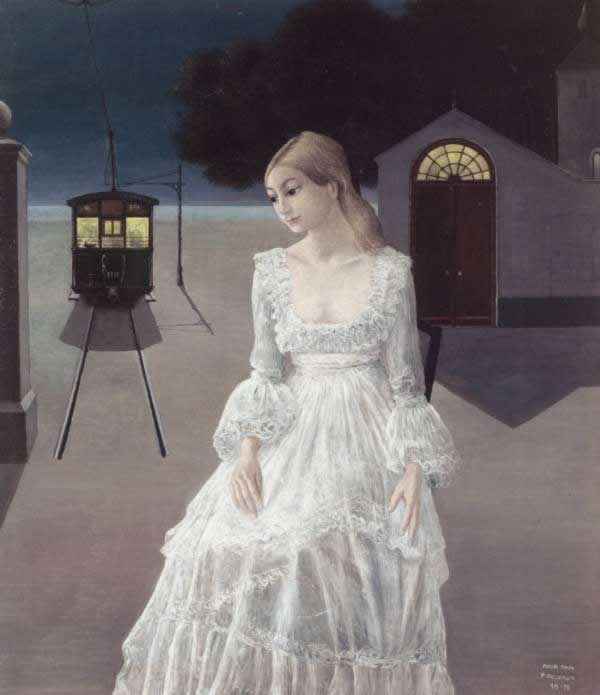
In 1959 he executed a mural at the Palais du Congrés in Brussels, one of several large scale decorative commissions Delvaux undertook. He was named director of the Académie royale des Beaux-arts in 1965. In 1982 the Paul Delvaux Museum opened in Saint-Idesbald. Delvaux died in Veurne in 1994.
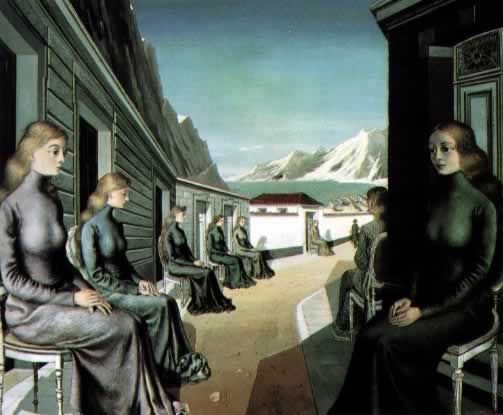
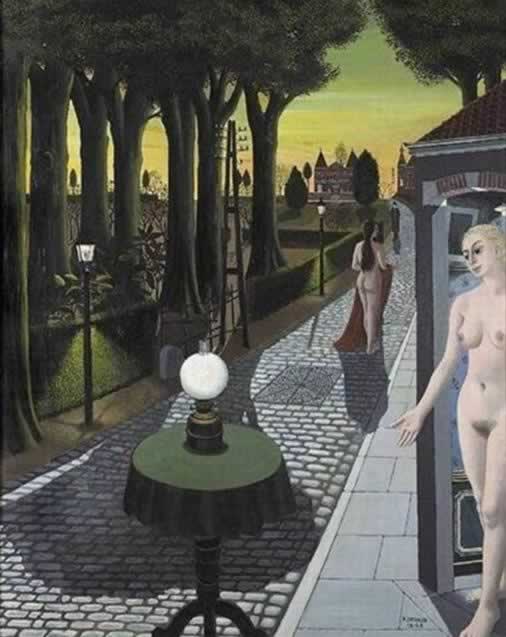
Still wondering about a painting in your family collection? Contact us…it could be by Paul Delvaux.
